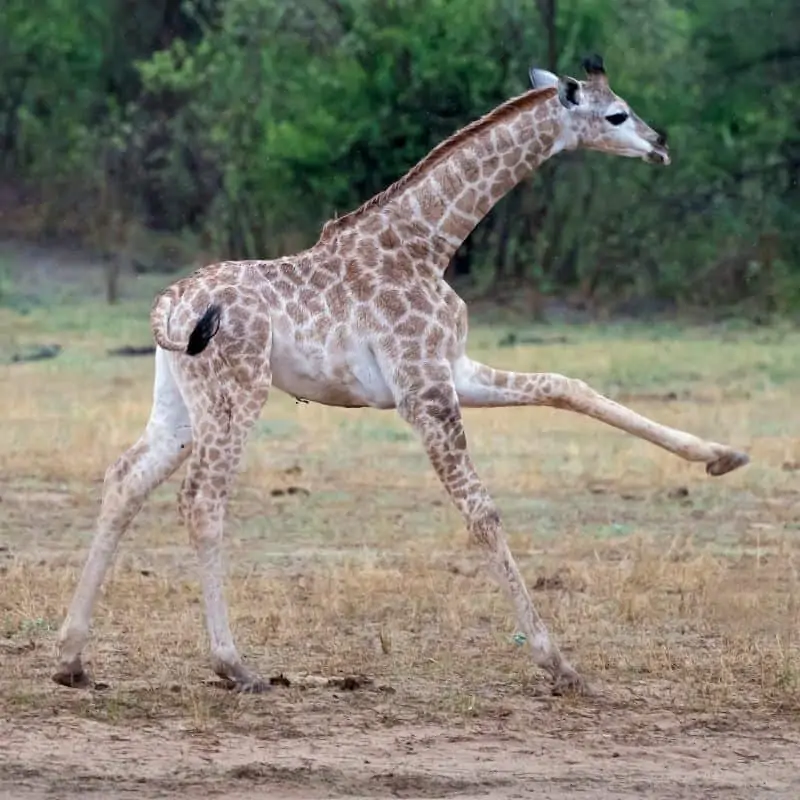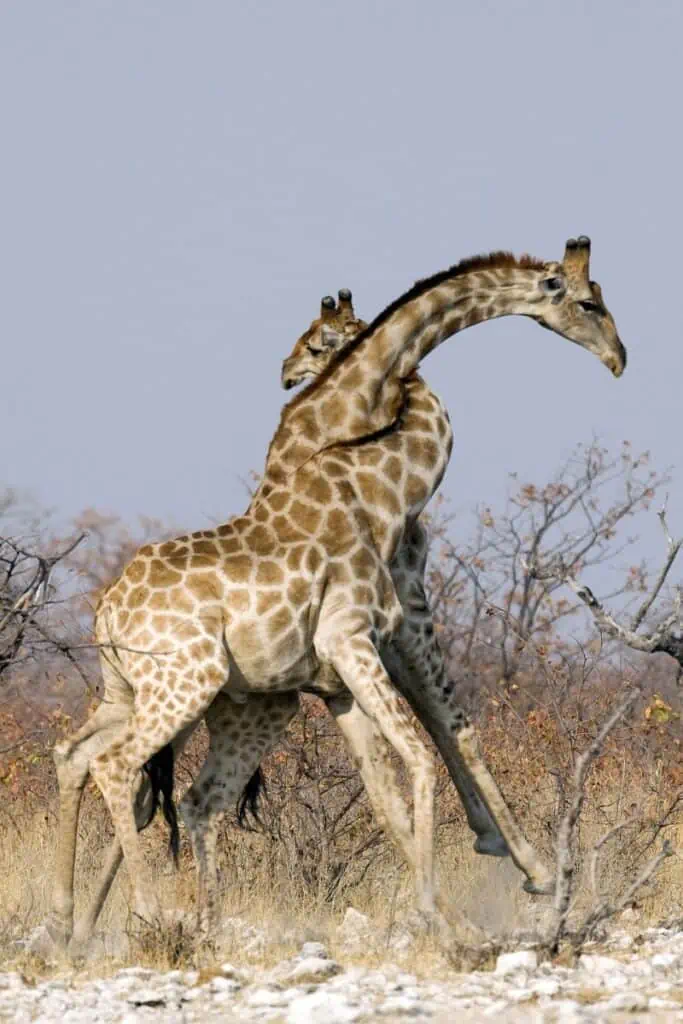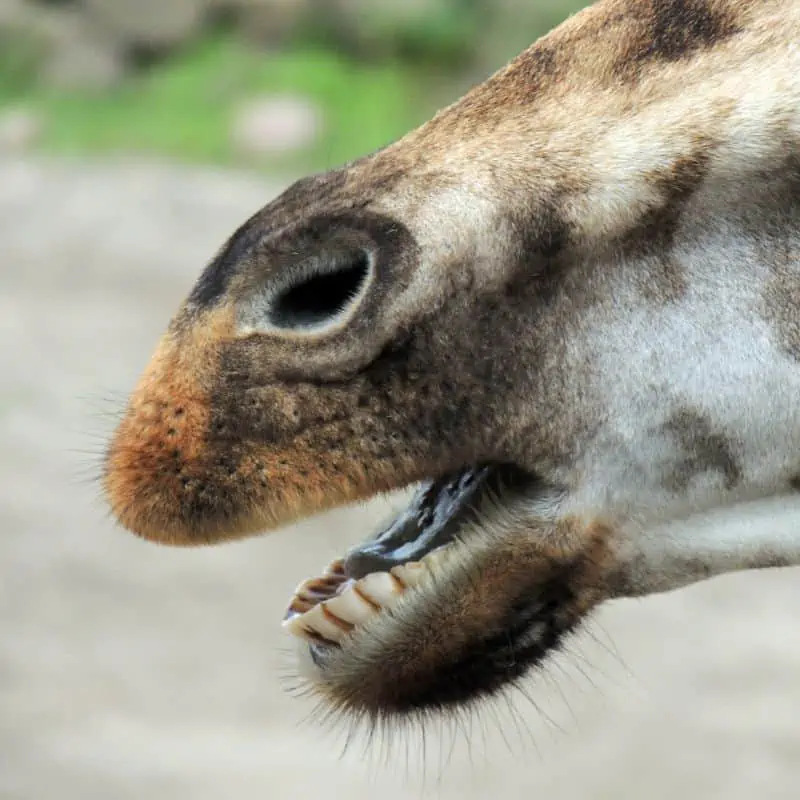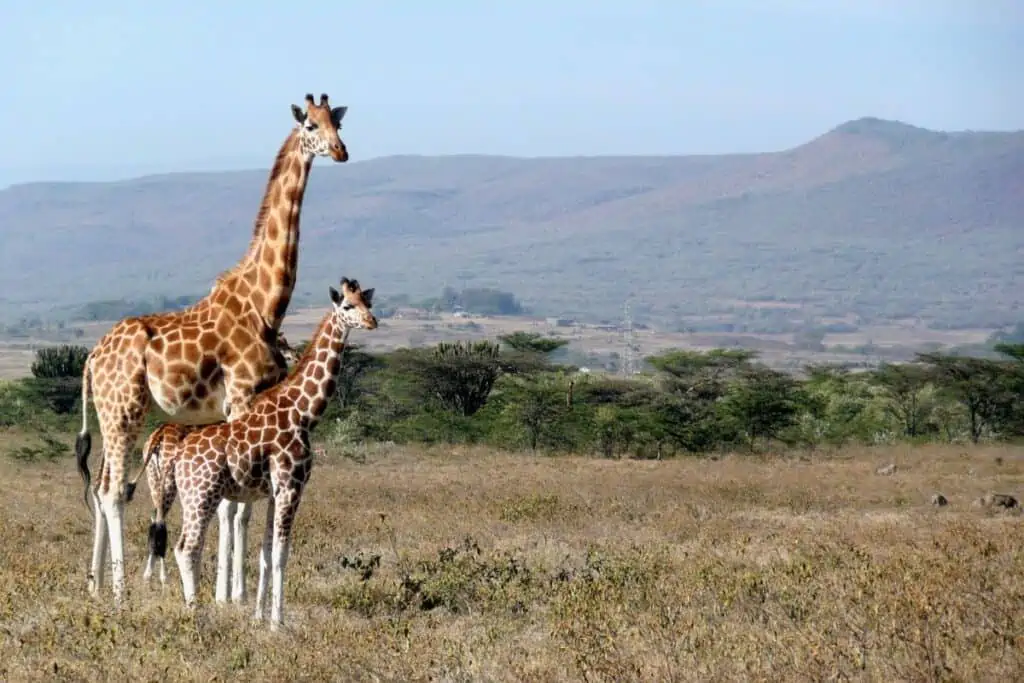Giraffes are gentle giants, but they aren’t pushovers. As the tallest land animal, reaching up to 19 feet tall and over 4,000 pounds, they can kill many predators with their body weight alone. A giraffe can decapitate a lion with a swift kick of its leg, but are giraffes dangerous to humans?
No, giraffes are not dangerous to humans because they will only attack when they are threatened or if they are protecting their young. Since they are herbivores, they don’t see you as prey. They are not as territorial as other animals and will leave you alone (or run away) if you come near.
You’re more likely to get attacked by your neighbor’s dog than a giraffe. The only reason giraffes can pose a danger to humans is their size and instinct if they need to defend themselves.
Let’s take a look at how dangerous giraffes are a little further.
How dangerous are a giraffe’s legs?
A giraffe kick can be deadly. Animal researchers estimate that a single kick equals 2,000 psi (pounds of force per square inch). A gorilla’s bite force is 1300 psi, a kangaroos kick is only 850 psi, and even a professional Thai kickboxer will only reach about 450 psi.
450 psi is enough to fracture your skull, so a full-force giraffe kick could shatter your bones.

Giraffes can also kick in any direction, unlike horses and zebras, who have similar leg strength but can only kick one way. This makes them far better at protecting themselves from predators. If cornered, they can trample even a lion to death.
That said, giraffes are naturally peaceful creatures and are more likely to use their legs to escape danger. Their top speed can reach about 37 mph, and their long necks give them a good view of their surroundings.
If they sense danger, they will pick flight before fighting; if they choose to fight, they will most likely win unless sick, young, or elderly.
How dangerous is a giraffe’s neck?
Giraffes mainly use their necks to reach food and water. The only time they use their necks for fighting is to establish dominance with other giraffes.
During mating season, male giraffes engage in neck fights (also called necking) to establish a hierarchy. The giraffes who can show greater strength, grace, or flexibility have a greater chance of approaching the females.

Young male giraffes tend to have low-intensity neck battles where they simply rub, lean, or give light blows. However, older and more aggressive giraffes may have very powerful attacks, where they brace their long legs against the ground to gain momentum and then strike the opponent on the head, neck, and chest area.
This video shows an aggressive neck fight between two giraffes.
These giraffe neck battles are part of the instinct that emerges during mating season to “woo” a mate and establish their place within the herd hierarchy. It is observed in many other species and shouldn’t be seen as a sign that male giraffes tend to be aggressive.
In short, the only reason to worry about being hit by a giraffe’s neck is if you’re a giraffe yourself.
But hypothetically, how dangerous would a neck attack be to a human?
A light rub or blow can knock you off your feet and close to its sharp and strong hooves. A single strong head butt could cause serious injury. A powerful neck swing could fling you across the field like a baseball bat.
How dangerous is a giraffe’s bite?
Giraffes are herbivores. You would think they have a lot of teeth to bite off branches and chew them, but that’s not true.
They don’t have any upper front teeth; instead, they have a dental pad, and they use their mouth and tongue to grab vegetation. The dental pad and their rough lips make light work removing a lot of leaves from a branch in one go.
Giraffes have 32 teeth, the same number as humans, but most of their teeth are at the back of their mouth.

These are generally molars, similar to cows’ teeth and other ungulates that chew the cud. They use these teeth to break down hardy leaves like acacia, large fruit, and tough seeds.
So, a giraffe’s bite isn’t really dangerous. It lacks the sharp front teeth of carnivores like lions, who use these to weaken their opponent and tear off large chunks of fibrous meat.
If a giraffe bites you, the biggest danger is infection. Like other wild animals, they can transmit rabies and antibiotic-resistant e.coli bacteria and salmonella.
Furthermore, any open wound, whether caused by a giraffe or not, can be fatal depending on the location and how quickly it is treated.
Giraffes are not dangerous unless they are provoked
Giraffes will only attack out of self-defense or to protect their young. That can be attested to by the very few isolated reports of human deaths or injuries caused by giraffes.
In the few cases of giraffe “attacks,” details are unclear.
There was a worker at a hunting ground who a giraffe kicked while on patrol, although reading between the lines, the fact that it occurred during hunting season already makes you wonder if the giraffe was only acting in self-defense.
Another report of a giraffe attacking a cyclist in South Africa raised fears, but animal behaviorists explained that the cyclists could have gone off-trail and approached a nesting area.
Perhaps a mother giraffe was protecting her young and chasing off humans that had gone “too close to home.”

It’s also important to remember that when we enter a giraffe’s habitat, we’re the threat. You would feel the same way if a total stranger sauntered into your living room and started poking around your things.
Giraffes are acting out of self-defense and survival instincts if they become aggressive, and you need to consider what you’re doing to provoke this.
